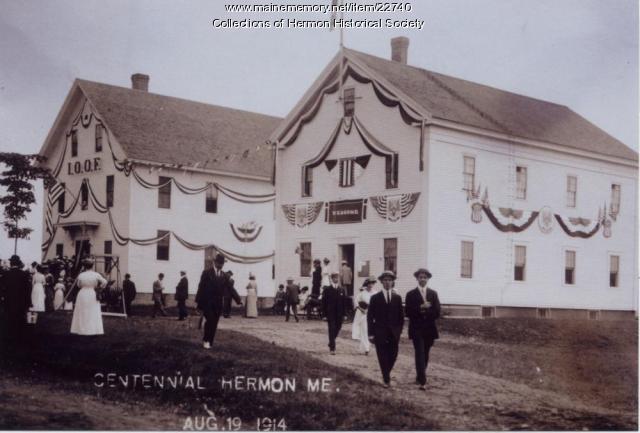Keywords: historic document
Item 31422
Scarborough Historical Society and Museum Building, ca. 1964
Contributed by: Scarborough Historical Society & Museum Date: circa 1964 Location: Scarborough Media: Photographic print
Item 6049
North Yarmouth Copy of the Declaration of Independence, 1776
Contributed by: Maine State Archives Date: 1776-07-04 Location: Philadelphia Media: Paper
Item 110170
Sears Roebuck and Company retail store, Portland, 1947-1951
Contributed by: Maine Historical Society Date: 1947–1951 Location: Portland Client: Sears Roebuck and Company Architect: John Howard Stevens John Calvin Stevens II Architects
Item 110246
Westbrook Junior College 130th Anniversary Program, Westbrook, 1961
Contributed by: Maine Historical Society Date: 1961 Location: Westbrook Client: City of Westbrook Architect: Wadsworth, Boston & Tuttle
Exhibit
MHS in Pictures: exploring our first 200 years
Two years after separating from Massachusetts, Maine leaders—many who were part of the push for statehood—also separated from Massachusetts Historical Society, creating the Maine Historical Society in 1822. The legislation signed on February 5, 1822 positioned MHS as the third-oldest state dedicated historical organization in the nation. The exhibition features MHS's five locations over the institution's two centuries, alongside images of leaders who have steered the organization through pivotal times.
Exhibit
Unlocking the Declaration's Secrets
Fewer than 30 copies of the first printing of the Declaration of Independence are known to exist. John Dunlap hurriedly printed copies for distribution to assemblies, conventions, committees and military officers. Authenticating authenticity of the document requires examination of numerous details of the broadside.
Site Page
View collections, facts, and contact information for this Contributing Partner.
Site Page
Winslow Historical Preservation Committee
View collections, facts, and contact information for this Contributing Partner.
Story
The Equal Freedom to Marry
by Mary L Bonauto
Marriage Equality, Maine, and the U.S. Supreme Court
Story
Lifelong Lepidopterist
by E. Christopher Livesay
Chris Livesay collects and studies butterflies.
Lesson Plan
Building Community/Community Buildings
Grade Level: 6-8
Content Area: Social Studies
Where do people gather? What defines a community? What buildings allow people to congregate to celebrate, learn, debate, vote, and take part in all manner of community activities? Students will evaluate images and primary documents from throughout Maine’s history, and look at some of Maine’s earliest gathering spaces and organizations, and how many communities established themselves around certain types of buildings. Students will make connections between the community buildings of the past and the ways we express identity and create communities today.
Lesson Plan
Nation to Nation: Treaties and Legislation between the Wabanaki Nations and the State of Maine
Grade Level: 9-12
Content Area: Social Studies
This lesson plan asks high school students to think critically about and look closely at documentation regarding the Nation-to-Nation relationship between the Wabanaki Tribes/Nations and the State of Maine. This lesson asks students to participate in discussions about morality and legislative actions over time. Students will gain experience examining and responding to primary and secondary sources by taking a close look at documents relating to the Maine Indian Claims Settlement Act of 1980 (MICSA) and the issues that preceded and have followed the Act.



















